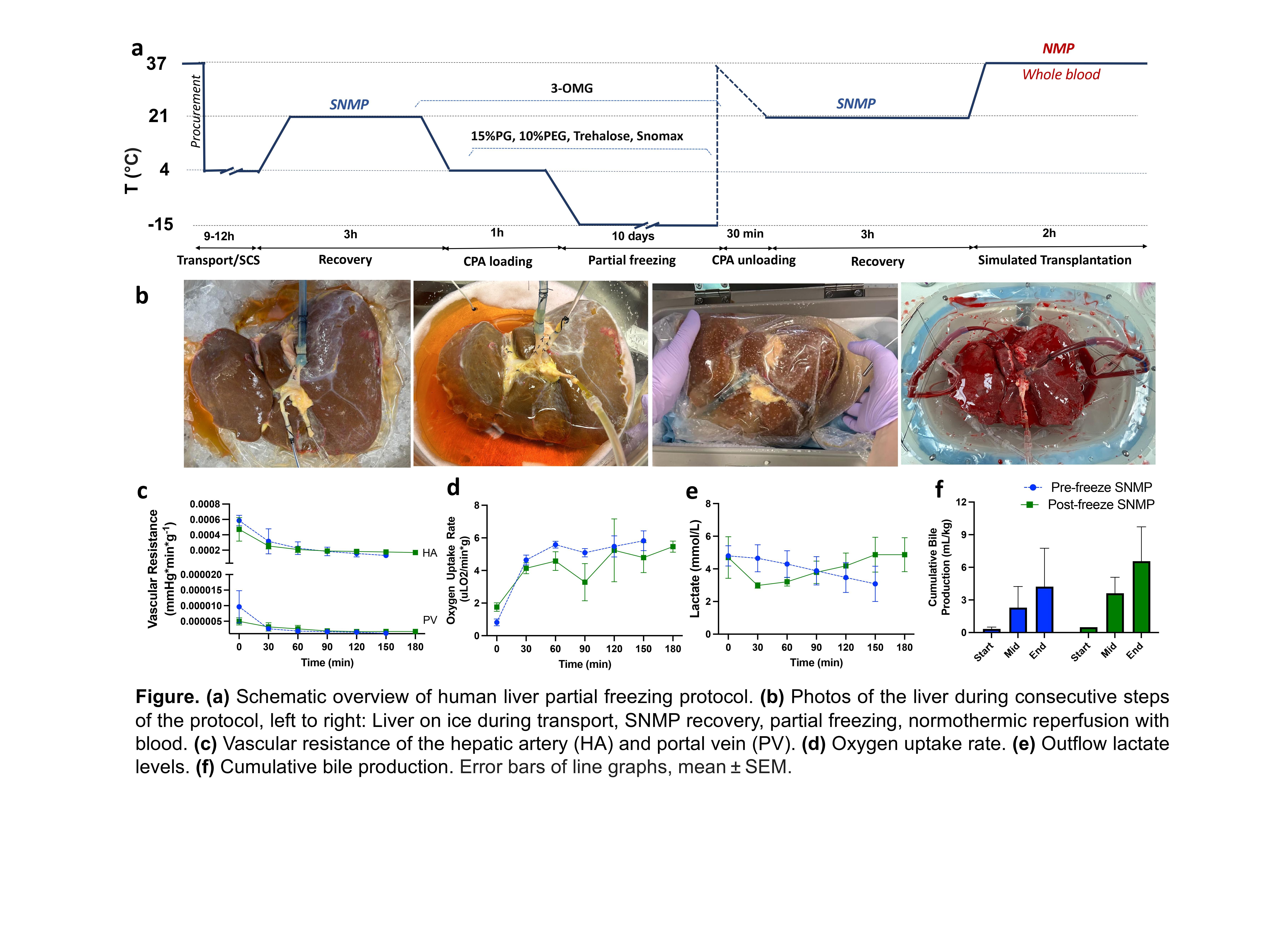Functional preservation of human livers for 10 days using partial freezing
Ozge S Ozgur1, Mclean Taggart1, Mohammedreza Mojoudi1, Antonia Dinicu1, Casie Pendexter1, Chris Taveras1, Madeeha Hassan1, James F Markmann1, Heidi Yeh1, Alban Longchamp1, Mehmet Toner1, Shannon N Tessier1, Korkut Uygun1.
1Center for Engineering in Medicine and Surgery, Massachusetts General Hospital, Harvard Medical School, Boston, MA, United States
Background: Partial freezing (PF) is a novel high subzero technique in preserving organs as low as -15C with precise control over ice formation and unfrozen section. Our group previously showed successful 5-fold preservation of rodent livers using partial freezing (PF) [1] Here, we aimed to translate PF to human livers with an extension of storage duration to 10 days.
Methods: Existing PF protocol [1] was optimized in swine livers before translation to human livers. Upon arrival, discarded human livers (n=3) were subjected to 3h subnormothermic machine perfusion (SNMP) recovery to assess function prior to initiating the PF protocol. After loaded with cryoprotectant agents, livers were stored for 10 days. Following 10-day freezing, livers were recovered with 3h SNMP followed by 2h simulated transplantation (ex vivo blood reperfusion). Perfusion parameters (i.e. vascular resistance, oxygen uptake, bile production) were compared between pre- and post-freeze SNMP.
Results: Human livers demonstrated comparable portal vein (p=0.464) and hepatic artery resistance (p=0.66) during pre- and post-freeze, indicating no additional resistance in partially frozen livers. Oxygen uptake rate rose and stabilized similarly (p=0.169). Lactate levels were comparable before and after freeze, indicating no major cellular injury (p=0.891) Cumulative bile production was higher after freeze, but not significant (p=0.179), highlighting the reserved functional capacity.

Conclusion: Our study demonstrated functional 10-day preservation of human livers. Perfusion metrics show comparable levels between pre- and post-freeze assessments, indicating that viability before and after partial freezing is unchanged. Further analysis will enlighten histological and mitochondrial status of livers.
This material is partially based upon work supported by the National Science Foundation under Grant No. EEC 1941543. Support from the US National Institutes of Health is gratefully acknowledged for the following awards: R01DK114506, R01DK096075, R01EB028782, K99/R00 HL1431149, R01HL157803, R01DK134590, R24OD034189 and from the Swiss National Science Foundation to A.L. (SNSF PZ00P3-185927).
[1] Liver Preservation
[2] Machine perfusion
[3] High subzero storage
[4] partial freezing
